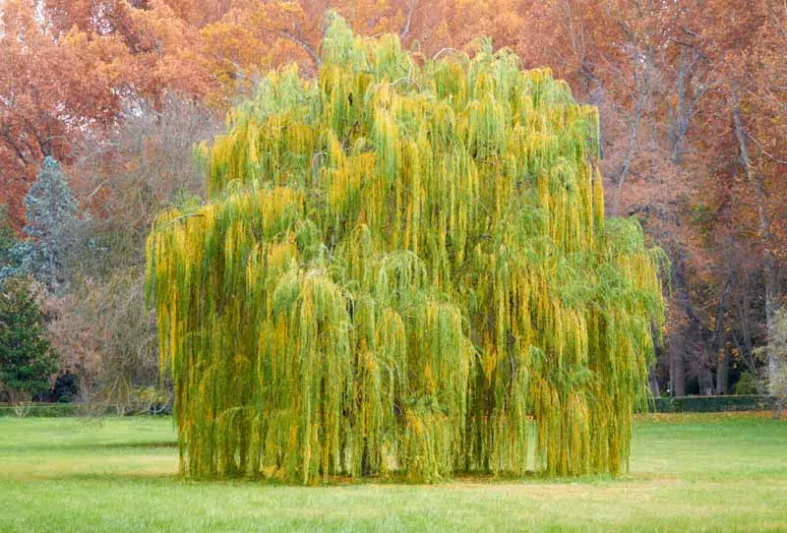Weeping Willow Tree: Graceful Elegance for Landscapes
The Weeping Willow, scientifically known as Salix babylonica, is a tree steeped in history, beauty, and intrigue, offering a wealth of interesting facts:
Historical Roots: Despite its name, the Weeping Willow is not native to the biblical land of Babylon. It originates from northern China and was spread along the Silk Road to the Mediterranean and other parts of Europe.
Artistic Inspiration: The tree’s unique, flowing form has made it a symbol of mourning and melancholy in poetry and art. Its dramatic appearance has inspired countless artists, including the famous painter Claude Monet, who featured Weeping Willows in several of his works.
Medicinal Uses: Ancient civilizations used the bark of the Weeping Willow for its pain-relieving properties. This is because the bark contains salicin, a compound similar to aspirin.
Rapid Growth: One of the fastest-growing shade trees, the Weeping Willow can grow up to 10 feet per year under ideal conditions, quickly creating a striking landscape feature.
Water Affinity: The tree loves water and is often found near streams, ponds, and lakes. Its roots are known to seek out water, making it useful for soil erosion control but problematic near plumbing systems.
Flexible Branches: The branches are incredibly flexible, historically used to make baskets and even living sculptures by bending and grafting them into artistic shapes.
Wildlife Habitat: The Weeping Willow provides habitat and food for various bird species and supports bees, butterflies, and caterpillars of some moth species.
Mythology and Folklore: In many cultures, the Weeping Willow is associated with immortality and rebirth. It appears in legends as a tree of enchantment and magic, often symbolizing the deep emotional aspects of life.
Distinctive Leaves: The leaves are long, slender, and a bright, shimmering green, turning golden in the fall. They create a soothing sound when the wind passes through them, adding a sensory dimension to its allure.
Cultural Symbol: In China, the Weeping Willow is a symbol of flexibility and resilience, as the tree bends without breaking. It is also associated with women’s beauty and sorrow in love poems and songs.
Ecological Importance: Beyond its ornamental value, the Weeping Willow plays a role in phytoremediation, using its extensive root system to clean pollutants from water.

